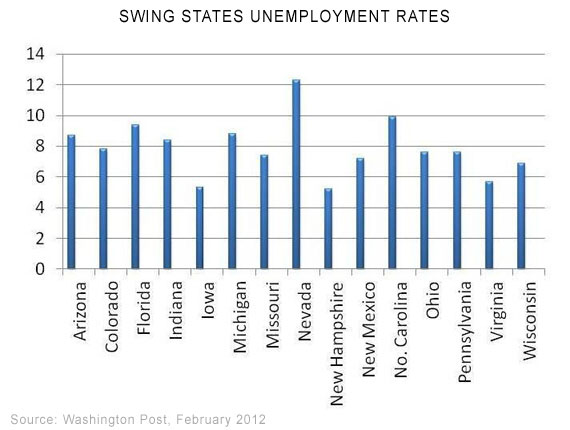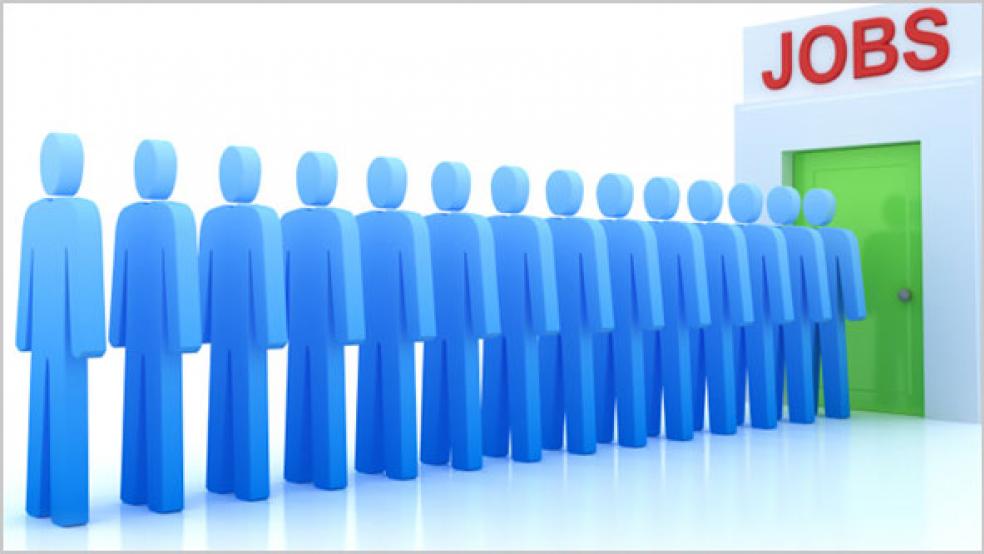Sorting out trends in the U.S. labor market is tricky business these days. There is plenty of evidence to support the view that unemployment is stalled at 8.3 percent for much of the year, and a case to argue that job growth is poised for takeoff. Three interlocking factors are seen in play - the pace of productivity gains, size of the labor force and the outlook for GDP growth. Dial any one factor up and it can change the jobs outlook significantly.
The consensus for March employment data out on Friday is that 201,000 new jobs were added outside the farm sector, a downshift from the 245,000 average monthly pace the United States has enjoyed since December. This would hold the jobless rate around its current rate of 8.3 percent, unless a surge of people who had been discouraged flood back into the labor market again and again start looking for work.
The optimistic school of economists forecast that job gains could be as high as 275,000 in March and reach 300,000 new jobs a month by later this year. Ian Shepherdson, chief U.S. economist at High Frequency Economics, builds his case around slowing productivity growth, which he sees as a sign of improved job growth around the corner. Productivity surged after the recession, reaching 6.1 percent pace in 2010 before hiring started to kick in, and then it fell back last year to 0.9 percent by the fourth quarter - repeating a pattern seen after the last three recessions.
Yet GDP growth appears to be holding around 2-2.5 percent in the January-to-March period, roughly its trend rate. The only way national output could remain firm while the number of widgets produced per worker was falling is if more people are working.
Shepherdson argues this suggests job growth will be strong in March and continue throughout the year. The second reason he is optimistic stems from the first, namely that small-sized firms, which frequently are in the service sector, are later to join the hiring spree and when they do, he said they tend to have lower productivity.
"Hairdressers, plumbers and electricians cannot meet the rising demand by cranking up machines, so as they start hiring people again, it lowers the productivity rate. But it will show up in payroll growth, creating more positive growth momentum for the economy," Shepherdson said. In other words, a virtuous circle starts to feed upon itself, generating more jobs.
Job growth in the ISM services index is already back to the levels seen before the crisis in 2006 and temporary jobs are at boomtime levels, Shepherdson said - all signs that small businesses in the service sector will continue hiring.
OECD chief economist Pier Carlo Padoan agrees the U.S. labor market appears to be turning the corner. "Our view is that unemployment will continue to go down," he said in releasing its forecast that the U.S. economy expanded by 2.9 percent in the first quarter, a more optimistic view than Reuters consensus forecast of 2.2 percent GDP growth.
Household confidence is rising, helped by a healthier jobs market and easier access to cheap credit, which allows people to reduce their debt loads and start spending again, he said.
The self-reinforcing mechanism where optimism fuels demand, which fuels job growth is kicking in, said the Institute of International Finance in its March economic monitor. "The chances of a virtuous cycle leading to sustained above-trend growth have increased," it said.
A Case for Caution
Federal Reserve Chairman Ben Bernanke, however, was far more cautious in a speech last week. While he acknowledged a wide range of indicators suggesting that the job market has improved, conditions are far from normal. "We cannot yet be sure that the recent pace of improvement in the labor market will be sustained," he said.
There are 5 million fewer jobs than before the recession; hours worked remain 4 percent below their pre-crisis peak. The number of long-term unemployed is high and job gains so far may simply be a bounceback after extraordinarily steep layoffs, he said.

And there are several conundrums. Usually GDP growth needs to be 2 percentage points above its trend rate to lower unemployment by 1 percentage point, yet unemployment has fallen from around 10 percent even as GDP growth has been sluggish.
One explanation could be that people have dropped out of the workforce, discouraged by how few jobs there are taking early retirement. Indeed the number of people in the labor force has fallen to 64 percent, its lowest since 1984, from an average of 66 percent between 2003-07. Fewer people seeking work lowers the jobless rate.
The risk is they could return, pushing up unemployment once again. Bernanke warned it is unclear what lies behind these changes and it merits careful watching.
Michael Feroli, chief U.S. economist at JP Morgan, is more optimistic. He sees moderate job growth continuing as the business expansion matures. But a mild winter and some quirks in how seasonal adjustments are calculated may have over-magnified recent job gains. JP Morgan now looks for a temporary boost in jobs through April before payrolls settle into a 200,000-per-month pattern for the rest of this year.




